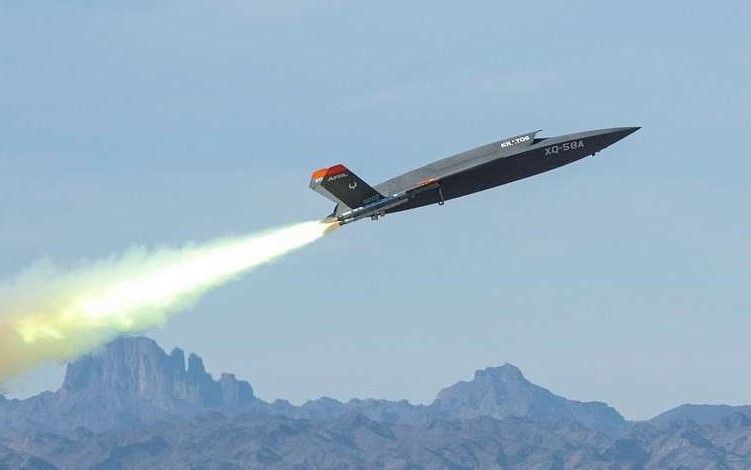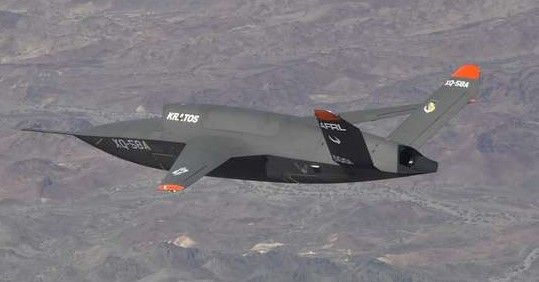AI Wingman Launches New Drone Era
Uncrewed jet-fighter support aircraft take to the skies with autonomous flight.

While most military analysts are absorbed by the advances in drone technology and their versatility in both the Ukrainian and Palestinian conflicts, the real technological breakthrough of the year may be in America’s drone wingmen.
While regular drones have broken the battlefield-mould through their remote-controlled flight, the XQ-58A Valkyrie is an entirely different beast.

“Essentially a next-generation drone,” explains the New York Times in its report on the Valkyrie’s maiden flight. Describing it as, “… a prototype for what the Air Force hopes can become a potent supplement to its fleet of traditional fighter jets, giving human pilots a swarm of highly capable robot wingmen to deploy in battle. Its mission is to marry artificial intelligence and its sensors to identify and evaluate enemy threats and then, after getting human sign-off, to move in for the kill.”
While few details are known about the wingman’s specifications and capabilities, the 10-metre-long fighter support aircraft has several known advantages over conventional aircraft. These include:
· Low-cost. With an expected price tag of only $6.5 million, the Valkyrie costs only a fraction of the crewed-aircraft it is expected to engage. It is even much cheaper than the approximate $38 million for a MQ-9 Reaper drone.
· Uncrewed. As the wingman has no pilot, the aircraft is much more expendable and can be sent ahead of piloted aircraft on more dangerous reconnaissance flights or function as an enemy target to allow crewed aircraft to gain position to strike.
· Artificial Intelligence. With autonomous, computerised thinking, the Valkyrie is able to assess many more data points than a human brain. This allows it to react more quickly and potentially outsmart its human opponents. Only the final decision to engage will remain with a human.
· No runway. To allow for flexibility in take-off, the wingman is launched with “rocket assist from a launcher/transport trailer, and landed using parachutes and airbags to cushion its impact with the ground.”
· Dual-purpose. The XQ-58A Valkyrie has been designed for both reconnaissance and long-range combat missions allowing it wider operational flexibility.
However, it is the application of AI that distinguishes this experimental aircraft from everything else in its class, placing it at the vanguard of the U.S. military as it attempts to use developing technology to gain an upper hand in any future conflict with China or Russia.

At the same time, the immense benefits of autonomous computerised flight are restrained by serious concerns about how much individual authority can be given to AI.
“It’s a very strange feeling,” said Major Elder, a lead member of the US Air Force team who is helping to test the system. “I’m flying off the wing of something that’s making its own decisions. And it’s not a human brain.”
Known specifications:
Speed: 1,050 kph
Range: 5,633 km
Ceiling: 13,716 m
Max weight: 2,722 kg
Meanwhile, Pentagon officials are already considering new strategies for combating enemy forces. Perhaps even planning to create large fleets of sophisticated but reasonably priced weapons that could be deployed into combat zones with minimal risk to American lives.
In addition, the fact that the XQ-58A Valkyrie has been developed by the relatively unknown Kratos Defense & Security Solutions, Inc., rather than a larger, more established player, such as BAE systems, Lockheed Martin, or Northrop Grumman is also raising eyebrows.

Already, a new generation of Pentagon contractors is being created as a result of the development of artificial intelligence, and they aim to challenge—if not overthrow—the near-monopoly of the small number of massive companies that provide the military with its aircraft, missiles, tanks, and ships.
While the XQ-58A Valkyrie has yet to complete its testing and is still someway off experiencing actual combat, the aircraft remains a true step into the future of aerial combat. It offers an insight into how quickly advanced technology is changing the weapons industry.
An era of new combat tactics, military culture, and arms development. Meaning that how war is waged may never be the same again.
Photo credit: Picryl, Jenikirbyhistory, Picryl, & Vectorpocket on Freepik

